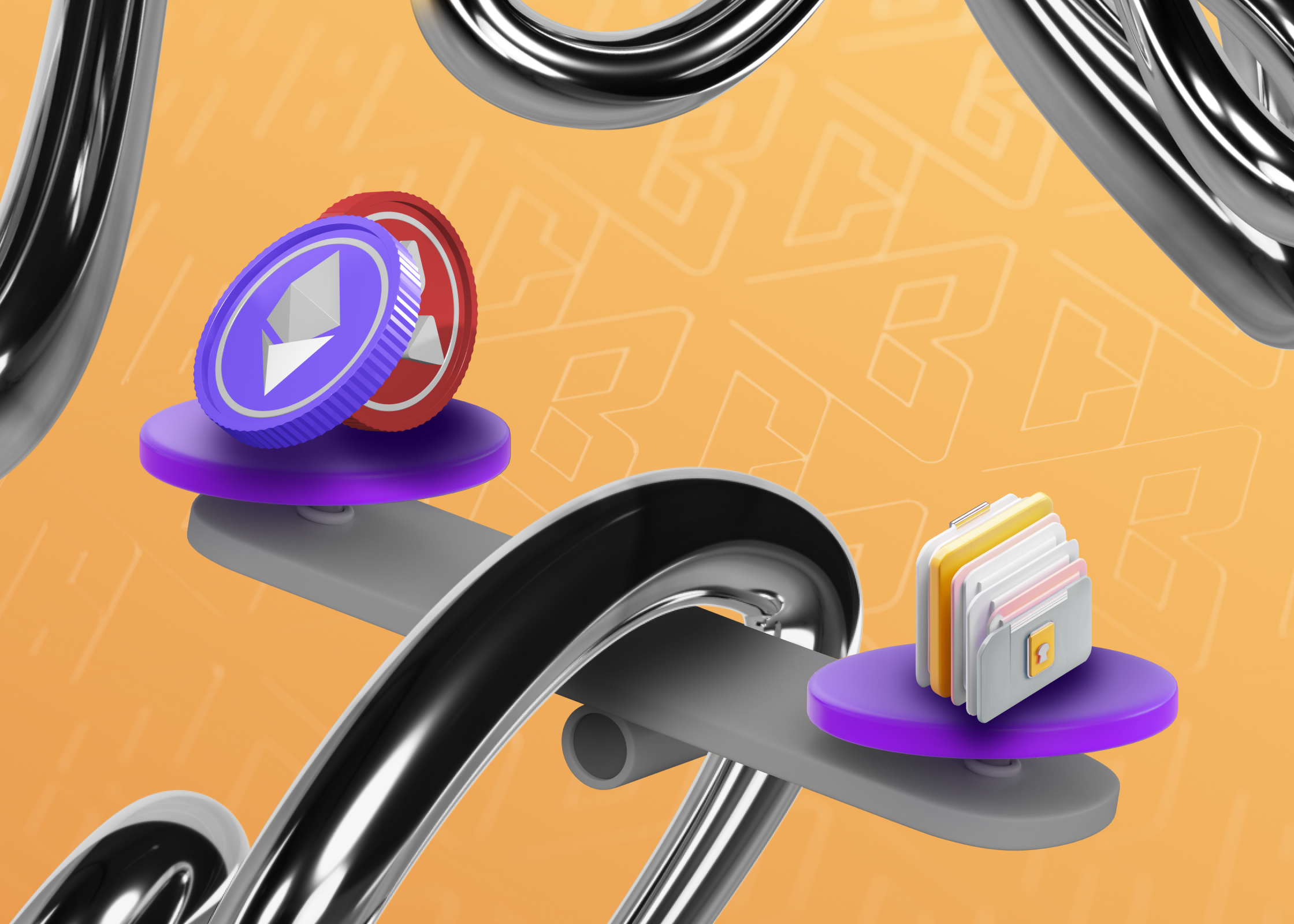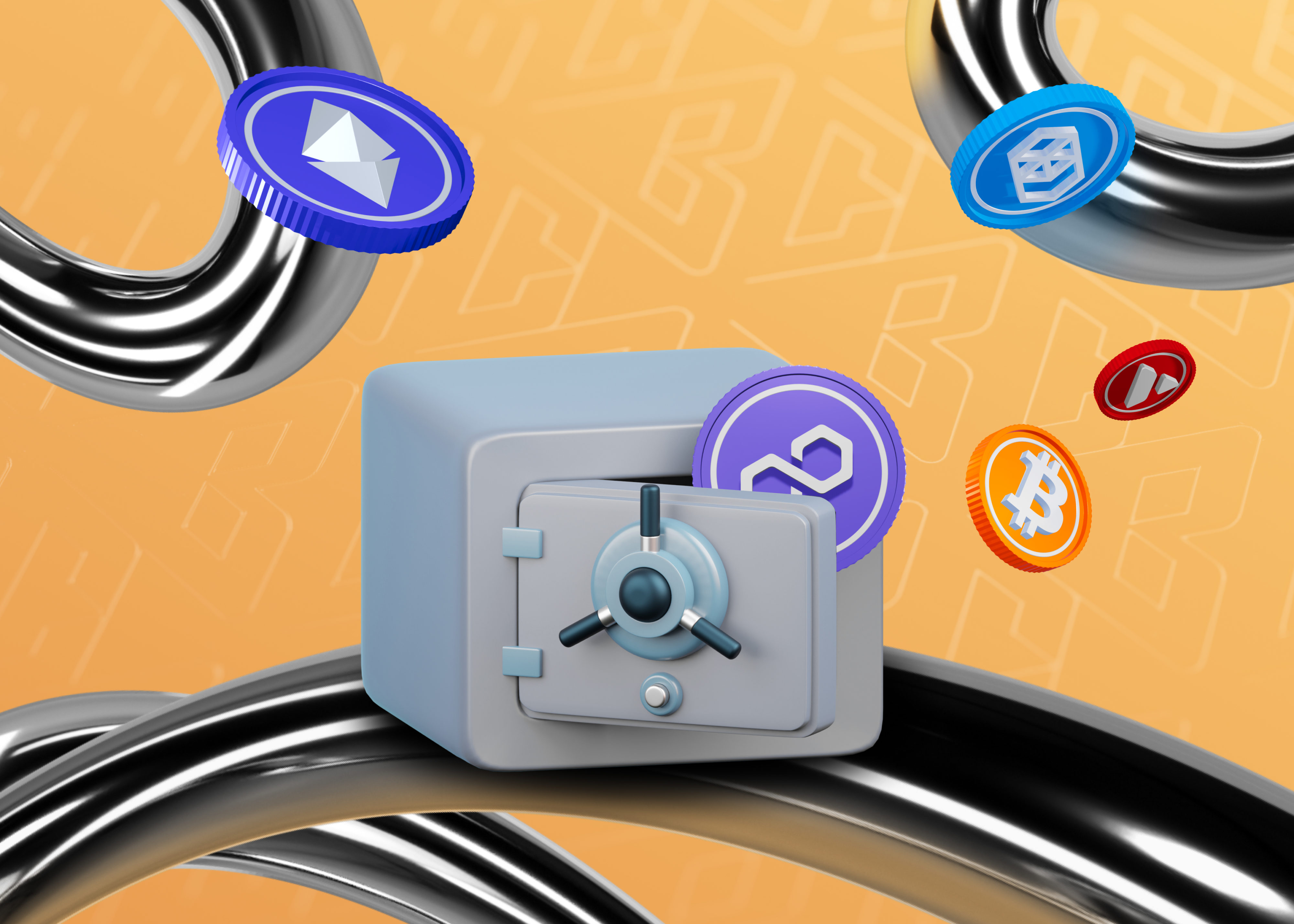Stablecoins: An Island of Stability in the World of Crypto

Stablecoins are the perfect choice for both newcomers and advanced crypto users. And now we’ll prove it!
The crypto market is known for its volatility and inconsistency. However, not all digital assets are subject to unpredictable price fluctuations. Some aim to maintain a constant value. In a sphere where token and coin values can experience sudden drops, there’s significant demand for currencies that organically combine the advantages of blockchain technology with a certain degree of reliability. These currencies are called stablecoins, and they’re the focus of this article.
If you still need to read our crypto article, we recommend you do so! It can be found at this link.
What Are Stablecoins?
Stablecoins are a special type of crypto created to maintain a stable value. They maintain a constant price equal to 1 US dollar or another stable currency. Unlike Bitcoin or Ethereum, whose prices can fluctuate greatly, stablecoins aim to be stable.
Stablecoins reduce the volatility of a crypto portfolio. Volatility measures how much and how often the price or value of something changes. In simple terms, it’s a characteristic of instability or changeability. Crypto, whose prices can change significantly quickly, has high volatility, while stablecoins pegged to the dollar have low volatility, thus protecting your portfolio from sharp declines.
The integration of stablecoins into decentralized finance (DeFi) protocols demonstrates their versatility. Stablecoins allow investors to lock in profits and limit losses as they reflect the value of fiat currencies or other assets.
In contrast to the volatility of Bitcoin and Ethereum exchange rates, stablecoins provide price consistency, which is critical for everyday transactions.
The most popular stablecoins are Tether (USDT), USD Coin (USDC), Dai (DAI), PayPal USD (PYUSD), and so on. Together, they create a stable foundation for crypto-related financial operations.
In essence, stablecoins combine the advantages of crypto — speed and low fees — with the stability of traditional currencies.
What Assets Are Stablecoins Pegged To?
Stablecoins are divided into three large groups:
- Centralized: These are pegged to traditional currencies, usually the US dollar, such as Tether (USDT) or USD Coin (USDC). One stablecoin is always equal to one dollar with minimal fluctuations. There are also stablecoins pegged to fiat currencies: for example, EURS is pegged to the euro, and XSGD to the Singapore dollar. It’s worth mentioning that stablecoins have physical backing in gold, oil, etc. PAX Gold (PAXG) is an example of such a stablecoin.
- Decentralized: These are backed by crypto and don’t depend on a central governing body. They use smart contracts to maintain a stable price. Examples — Ethena USDe (USDE) and DAI.
- Algorithmic: These typically don’t have direct backing and are less stable than decentralized stablecoins. They use algorithms to maintain a stable price of around $1. Unlike other types, they don’t require reserves in fiat or crypto. They’re more decentralized and less dependent on external factors but also more vulnerable to sharp market fluctuations and potential algorithm failures. Examples include Ampleforth (AMPL) and FRAX.
How Do Stablecoins Differ?
Stablecoins differ in their mechanisms for maintaining their value. And while there’s no unified classification, several key characteristics can be identified:
- Type of backing: Some stablecoins are pegged to fiat currencies, while others derive value from crypto.
- Level of backing: The degree to which reserves cover circulating stablecoin tokens varies. Reserves can partially cover, fully match, or even exceed the total value of tokens in circulation.
- Price stabilization method: This criterion includes the approach used to maintain the stablecoin’s price. Some stablecoins rely exclusively on reserves, and this method is prevalent in centralized projects. Others use a combination of reserves and algorithms characteristic of algorithmic stablecoins.
These differences create a diversity of stablecoins, each with its features and unique ways of ensuring stability in a volatile crypto market.
Advantages of Stablecoins
Stablecoins have many advantages, making them a valuable tool for investors, traders, and crypto users:
- Convenience for everyday transactions: Stablecoins are characterized by stability, which is critical for daily operations. In contrast to many volatile cryptos, leading stablecoins maintain a steady peg to underlying assets, making them reliable tools for regular use by businesses and individuals.
- Blockchain-based transactions: Stablecoins use blockchain technology to allow users to quickly transfer funds anywhere in the world to compatible crypto wallets. This method is efficient and increases overall transaction security, as it minimizes the risks of double-spending and fake operations.
- Portfolio hedging for market participants: Hedging is a way to protect against financial risks. The main idea is sacrificing part of your potential profit for greater stability and risk reduction. It’s like installing a lightning rod. The lightning may never strike, but you’ll be protected if it does. Traders and investors can include stablecoins in their portfolios as a strategic element to protect against market fluctuations. Allocating part of the funds to stablecoins helps reduce risks. This tactic allows you to preserve capital during downturns and creates opportunities for profitable acquisitions. Moreover, converting crypto to stablecoins during market downturns (shorting is a financial strategy where an investor tries to profit from a falling asset price) provides a convenient way to enter and exit positions without withdrawing funds from the blockchain system.
Thus, stablecoins provide stable value, efficient international transfers, and strategic risk management opportunities, making them multifunctional and useful in various financial situations.
Disadvantages of Stablecoins
Despite all the advantages, stablecoins have limitations:
- Uncertainty in maintaining the peg: The stability of a stablecoin’s peg is not guaranteed. While some large projects consistently maintain the peg, others face difficulties and may need help coping with this task. Persistent problems with maintaining the peg can significantly reduce the value of a stablecoin.
- Transparency issues: stablecoins lack full transparency and are limited to periodic checks instead of comprehensive public audits. Private accountants often conduct such checks on behalf of stablecoin issuers, which calls into question the level of transparency of the underlying financial operations.
- Centralization in fiat-backed stablecoins: Stablecoins backed by fiat currency tend to be more centralized than other crypto. A centralized organization subject to external financial rules holds the collateral for these stablecoins. This centralization gives the organization significant control over the stablecoins, requiring users to trust that the stated reserves are indeed held.
- Dependence of crypto coins on the community: Stablecoins backed by crypto heavily depend on their communities. The governance mechanisms of such projects are open, and users participate in making various decisions. However, it also means that users must actively participate in voting or trust the decisions of developers and the community, creating a dependence on collective decisions.
These limitations highlight the complex issues associated with stablecoins.
Stablecoins: Conclusion
In today’s world, finding an investor or trader who works with something other than stablecoins is rare. These coins offer quick access to emerging markets. Their presence facilitates opening and closing positions without transferring funds to fiat currency. Beyond trading and investing, stablecoins enable seamless payments and international transfers. Stablecoins have become an integral part of the modern crypto market. But despite their versatility, it’s essential to recognize that stablecoins, like crypto, carry associated risks. Creating a diversified portfolio and conducting thorough research before making trades is necessary to minimize these risks.
Follow Banana Education — we’ll open up the fascinating and promising Web3 world for you!





 к нам?
к нам?